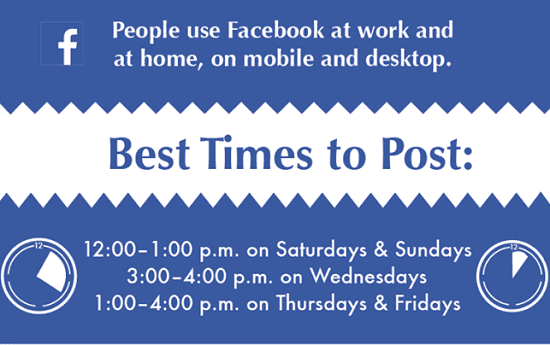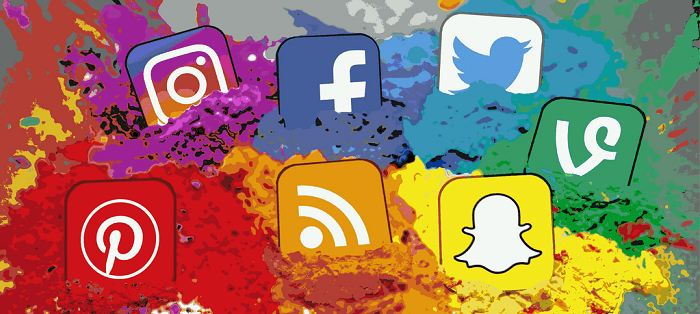Each day we share 27 million pieces of content. This need of daily information has already changed marketing strategies of many brands. They are no longer advertising-like and intrusive.
The reign of outbound marketers is gone.
In turn, inbound marketers came to reconstruct and readjust the strategies of an old school to earn customer loyalty.
And the data supports it — according to the HubSpot research acquiring a new lead through inbound channels costs 62% less today.
As you know, inbound marketing communication is bilateral.
Customers come to you from social media websites, search engines, and referrals.
Sure, you cannot build the whole strategy on one of these channels solely.
Yet, social media feedback, for example, can considerably improve your content marketing strategy.
Check out these 5 ways on how to promote engagement and conversion rates through social media.
Figure Out the Appropriate Time for Publishing and Sharing
Each SMM manager has already decided on the optimal frequency of shares.
Some gurus mention three times as the maximum number.
However, there are studies that uncover the most appropriate days of the week and times of day to share content.
For this reason, I rely on a CoSchedule in-depth research when crafting my weekly content plan.
Below, you can see a HubSpot infographic that summarizes its key points.

Source: https://blog.hubspot.com/marketing/best-times-post-pin-tweet-social-media-infographic
The publishing time differs from one social media platform to another.
For instance, Twitter’s peak days for shares and likes are all weekdays / business days.
Also worth noting: the best time for re-tweets is from 5:00 to 6:00 p.m. on Wednesdays.
In my own research based on testing of various social media techniques, I’ve noticed that publishing depends on two factors.
The first is your target audience, and the second is the type of your message or status posted.
For instance, our Facebook audience reacted on posted memes on Tuesdays more frequently than on Wednesdays.
A/B Test Each Message to Determine the Most Felicitous Topics
You can select a number of topics and rely on your gut feeling that one day you’ll get enough feedback on them.
Yet, if you want to receive surefire results, you must rely on numbers.
This is a quality approach to convert new leads received from social media platforms.
To get accurate quantitative results you need to use A/B testing, which is based on a simple comparison principle.
For example, you can choose any post you want to gather a number of likes and shares.
Then, duplicate it with one difference in the title description.
Try to publish them at the same time, no more than 1 hour apart.
Below you can see an A/B testing example of a BufferApp post used in tweets sent out by Convince&Convert.
It shows the considerable difference in clicks and “potential” numbers.
Such experiments can serveto clarify the types of messages that will best resonate with your audience.

Source: http://www.convinceandconvert.com/content-marketing/9-best-from-buffer/
Use Trusted Social Media Tools and Resources
The growing competition for the attention of your social media audience prompts many marketers to select the most powerful content marketing tools and resources.
Some of them I have gathered in this short list of must-haves for any content manager or marketer.
- Mention helps to define what exactly people say about your brand and messages. The tool tracks and collects conversations about your brand. Using it, you can enhance your reactive social media strategy.
- AMI Headline Analyzer is a free tool that defines emotional marketing value of your headline’s message. As a result, it will bring you more likes and shares.
- Piktochart allows creating engaging infographics saving on resources and time.
- Quora is a must-visit resource for marketers, content managers, and SMM specialists. If you want to find top questions of your audience and gather unique data to reach more followers, explore Quora every day.
Create and share social native videos via live-streaming platforms such as Facebook Live, Instagram Stories, and Twitter’s Periscope.
In fact, Adelie Studios reports that native video content gathers 1200% more shares than images and text.
Social media users value not only funny cats but also helpful content.
Use live-streaming tools to initiate discussions on any issue that may be interesting to your audience. Invite experts to share their viewpoints and tips.
Make your video content diverse, catchy and relevant to your target audience’s needs.
Do not make social videos promotional; rather, focus on making them more informative and useful.
Remember the new tendency is to advertise without advertising.
Keep following the new rules of inbound marketing as much as possible.
Here’s the reason why uploading native videos directly to social media platforms is more strategically relevant: Refocusing from YouTube to Facebook’s algorithm can increase your organic reach through video’s views and comments.
Check out the stats below to convince in this fact.

Always respond to comments to keep up a conversation
If you want to build an effective communication between your brand and your social media audience, be responsive.
Yet, do not rush to answer and send FB emoticons to all comments out there.
Spend some time studying the ongoing conversations.
If you find a disputable topic, join the talk.
Try to be 0% promotional but 100% helpful and sound like an expert in the discussed issue.
This way you support your audience in sharing their ideas, preferences, interests, complaints, and fears.
You should choose the right voice of a talk with your followers.
It will allow you to pick out those titbits of information to craft a complete profile of your audience.
Smart marketers use such social media feedback to set an unobtrusive contact and long-term interaction.
Besides, taking the time to respond you invest into a perfect description of your buyer personas.
It is as important as communicating with a customer through Support channel.
Featured Image Credit: CC 0; Public Domain. View original image on flickr.com.
Disclaimer: The views and opinions stated in this post are that of the author, and Return On Now may or may not agree with any or all of the commentary.





